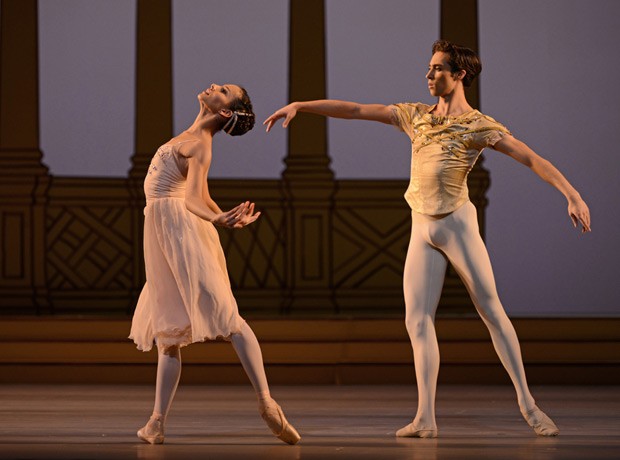
© Dave Morgan, courtesy the Royal Opera House. (Click image for larger version)
Royal Ballet
Rhapsody, The Two Pigeons
London, Royal Opera House
30 January 2016
★★★★★
Gallery of Rhapsody pictures by Dave Morgan
www.roh.org.uk
What a joy to have Rhapsody back in its original setting! (and costumes more or less.) The past two redesigns wantonly ignored the ballet’s title and Ashton’s desire for it to be a celebration – both of the Queen Mother’s 80th birthday and of Mikhail Baryshnikov’s virtuosity.
I caught up with its reincarnation at the end of its run with The Two Pigeons at the Saturday matinee with Francesca Hayward and James Hay as the leads in Rhapsody and Beatriz Stix-Brunell and Matthew Ball as the two dove-lovers. The matinee was a fitting finale for the revival of both Ashton ballets, 20 years apart, giving welcome opportunities for young soloists to make their mark.
With James Hay (interview) in the Baryshnikov role, the leading man becomes first among equals rather than a visiting celebrity. Although he opens the ballet on his own, Hay belongs in the community of dashing cadets and jeunes filles en fleur – six young girls in bloom. He is gallant, courteous, and on a mission. He is waiting for the arrival of his soul mate, the ballerina who is in a different league from the ladies-in-waiting.
 

© Dave Morgan, courtesy the Royal Opera House. (Click image for larger version)
She arrives to mysterious music, framed by the pillars of the pavilion Ashton designed. Like the ballerina in his Scènes de ballet, she is partnered by all the men before being claimed by her intended lover. He has to search for her, raising the arms hiding the faces of the attendant women, though she is not amongst them. Hayward has the magical quality that Margot Fonteyn had of making you want to cry. It’s a combination of gravity, vulnerability, musicality and sheer pleasure in dancing.
Hayward is blessed with a supple back and shoulders so that she melts into luscious movements, swivelling around herself, always in motion. There’s no tension in her upper body as she executes exquisitely complicated combinations of steps at great speed, skimming across the stage. Hay catches her in mid-skim, raising her so that she floats like thistledown. Their pas de deux is a paradigm of perfect harmony, whether simply walking side by side or exulting in high-flying lifts. Though they include the audience in their enjoyment, they dance for each other, not for our admiration.
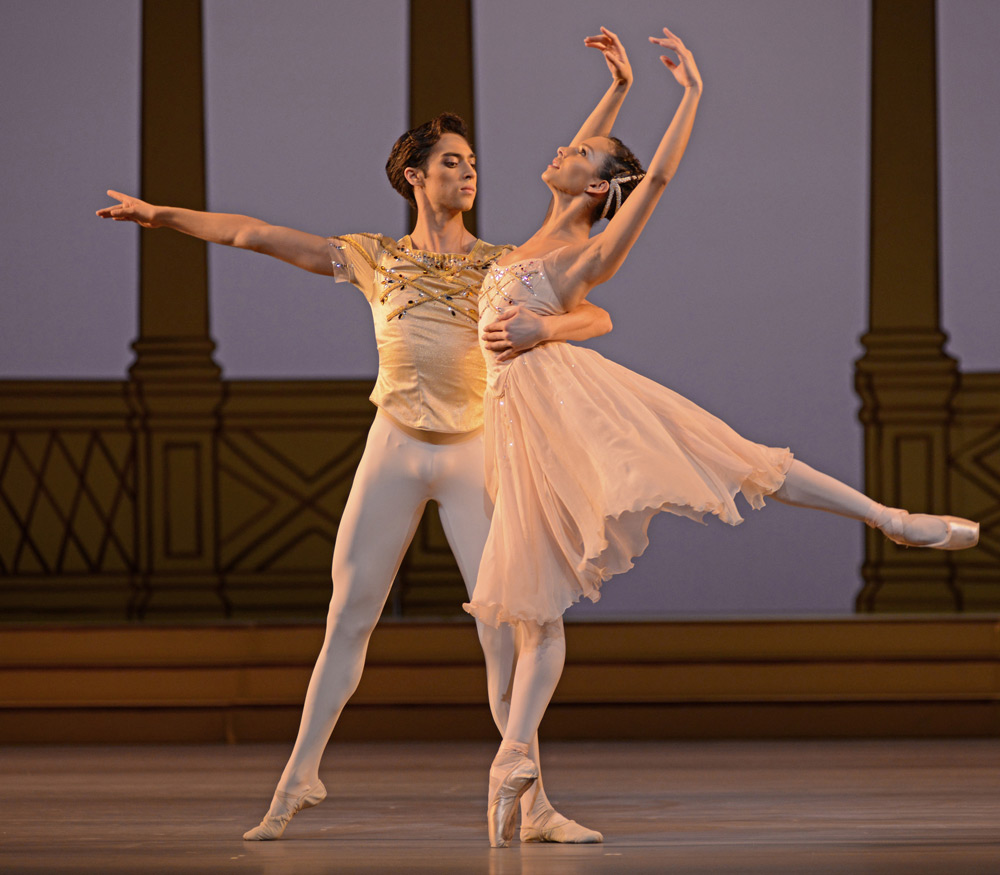
© Dave Morgan, courtesy the Royal Opera House. (Click image for larger version)
The six men are more flamboyant than their decorous female counterparts. To match the leading man’s virtuoso spins, leaps and swift changes of direction, Ashton gave his courtiers intricate beaten steps and frequent double tours en l’air. So much arm waving and interlacing of formations are required that the men are in danger of looking more like chorus boys than danseurs nobles. Back in the 1980s, in William Chapell’s original costumes, the men were so decorated with glitter that they couldn’t help looking effeminate. Now they do their best to be soldierly, costumes toned down and choreographic execution beefed up.
The women, in their fondant-coloured dresses, dart and shimmer, shoulders always in evidence. There is more épaulement in Rhapsody than in all the one-act ballets this season put together. Olivia Cowley and Yasmine Naghdi stood out for the long lines of their twists and turns in mini-solos. Because Hay and Hayward remained serene throughout, underplaying their dazzling variations, Rhapsody cohered into an exhilarating ballet instead of a showcase for pyrotechnics. At the matinee, there was a collective sigh at the end of their pas de deux and ecstatic applause at the curtain calls.
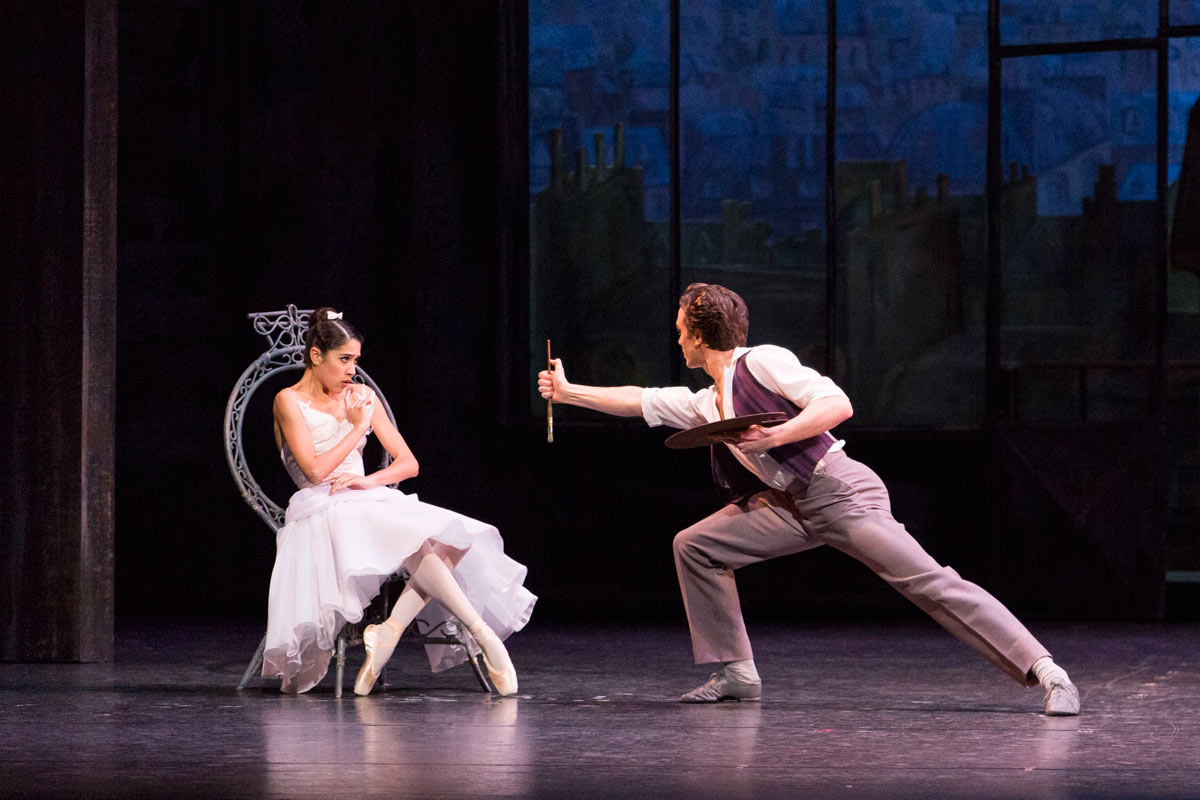
©ROH, 2016. Photographed by Helen Maybanks.
Rhapsody pairs well with The Two Pigeons because some of the same moves recur in a very different context. The Young Girl also ducks beneath her lover’s outstretched arms, popping up on the other side of his body to lay her head on his shoulder, but this time she’s annoying instead of alluring. Her girlfriends’ épaulement becomes an imitation of birds’ wings. And the final pas de deux of reconciliation is a real tear-jerker, beautifully done at the matinee by Stix-Brunell and Ball.
Stix-Brunell is so sassy as the Girl that she could be the heroine of Louis Mérante’s original 1886 scenario for Les Deux Pigeons. Instead of staying forlornly at home when her fiancé leaves, she follows him to the gypsy camp, seduces him and gets him back. (She has a mother, transformed in Ashton’s ballet into an otherwise inexplicably nosy neighbour.) Stix-Brunell’s Girl is anything but passive-aggressive. She’s the one who wants more excitement from her love affair, while he is a dreamer, naively besotted with an exotic gypsy temptress.
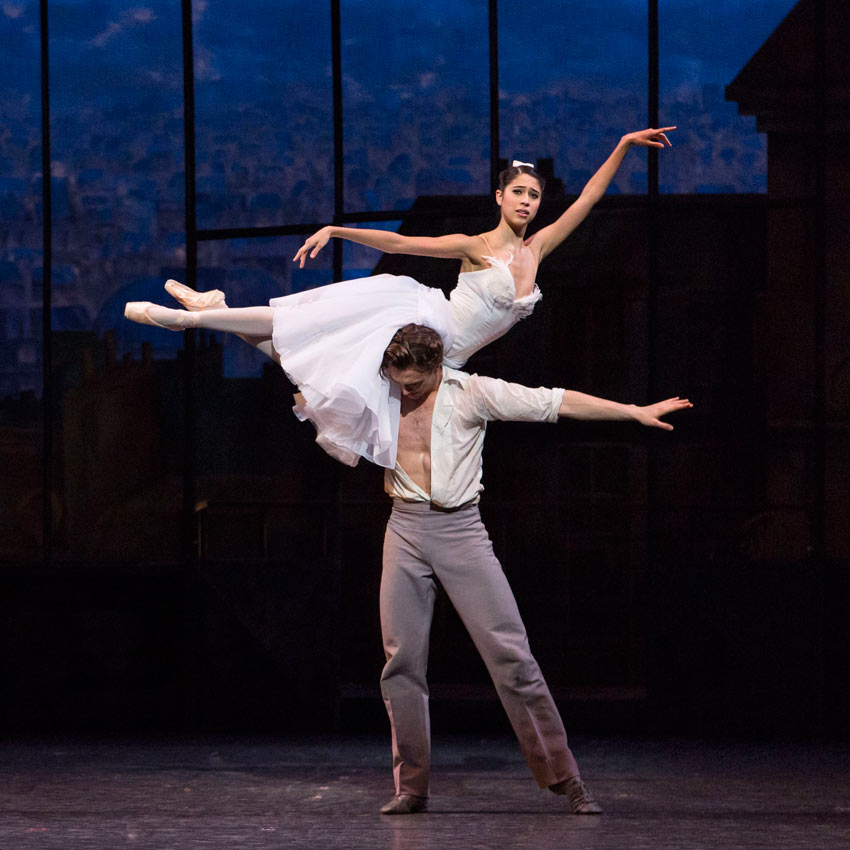
©ROH, 2016. Photographed by Helen Maybanks.
Claire Calvert as the gypsy shakes and shrugs her shoulders sexily, but she’s no threat, unlike Laura Morera in the role. Those gypsies dance and dance interminably in Act II, the men gamely avoiding appearing camp in their gaudy chest-baring outfits. The Royal Ballet’s supporting men have had to put up with a lot in this Ashton bill, especially compared with the butch pirates in English National Ballet’s Le Corsaire. Ball, though, was convincingly sincere as the artist, contrite as he returned with the white dove on his shoulder.
Finally drawing full houses by the end of its run, The Two Pigeons fully justified its return to the company’s repertoire, showing artists and audiences how wittily and sympathetically Ashton’s choreography expresses character and emotions – a lesson for all choreographers hoping to tell human stories.
















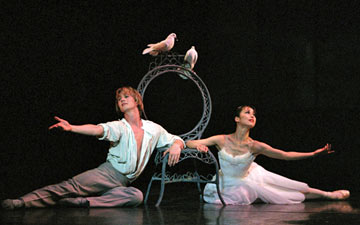
You must be logged in to post a comment.